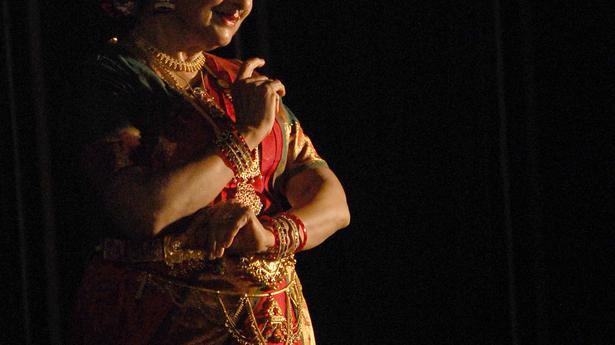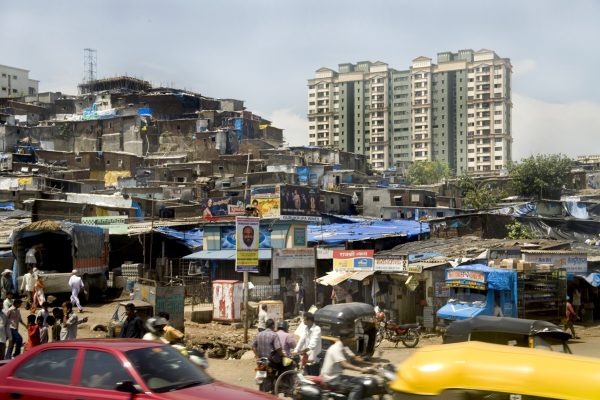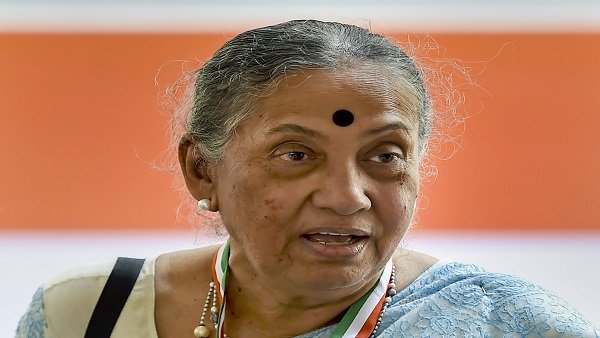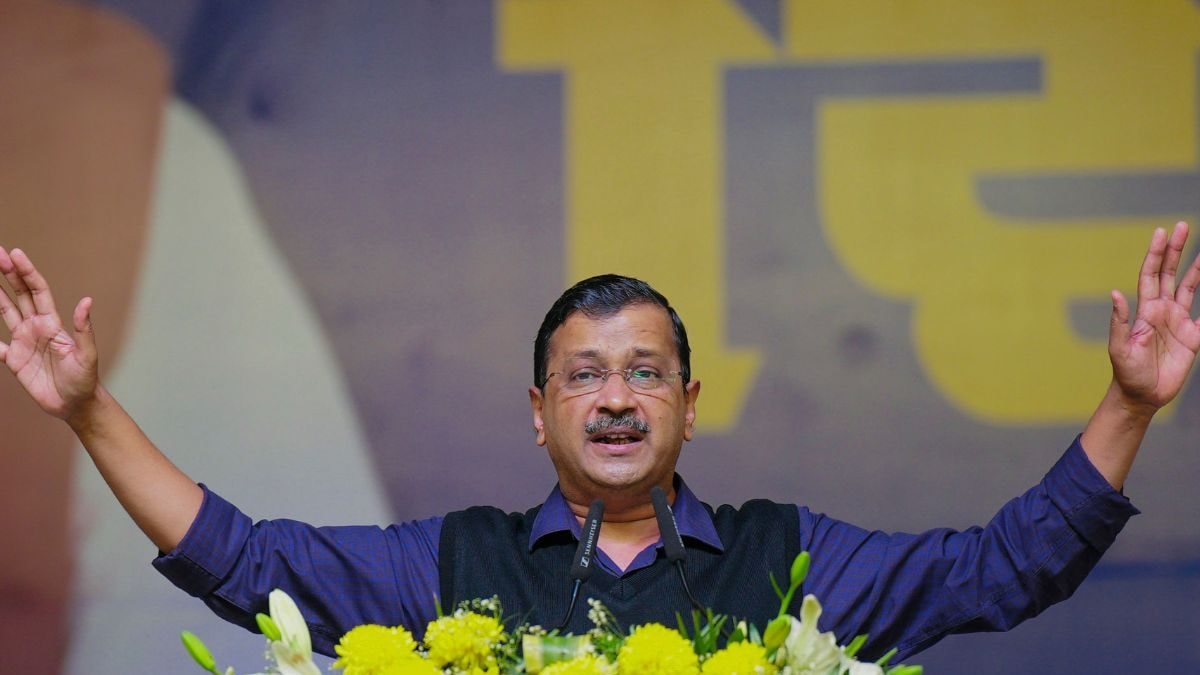Padma Subrahmanyam talks about how her distinct style of Bharata Nrityam is influenced by Sadir, regional forms, languages, history, architecture, and of course, the Natya Shastra
Padma Subrahmanyam talks about how her distinct style of Bharata Nrityam is influenced by Sadir, regional forms, languages, history, architecture, and of course, the Natya Shastra
In the clamour of divisive narratives vying for attention in today’s India, Padma Subrahmanyam represents a unified vision. As the veteran dancer-scholar’s institution Nrithyodaya celebrates its 80th anniversary from August 5, she can command the longshot perspective, not merely in terms of her decades of experience in the arts but also because of her early introduction to the idea of India. The theme of Nrithyodaya’s anniversary is ‘80 celebrates 75’, a reference to the 75th anniversary of India’s Independence and a doff of the cap to the institution’s founder, freedom fighter and film director K. Subramanyam, Padma’s father. She reminds us that her father’s 1939 feature film
Padma Subrahmanyam, whose life’s work has been dedicated to research and performance of the classical dance and literature of India, with special focus on the Natya Shastra, steadfastly steers away from a discussion of today’s politics and where modern India might have deviated from the ideals of the freedom fighters, saying, “As a dance historian I often separate myself from my own work.” However, her work does exemplify a holistic vision and an acceptance of intermingled streams.
“My work can be understood as a revival of a common grammar of dance and drama. Because this is what the Natya Shastra gives us. It was a common grammar not only at a pan-Indian level, but more than 25 years ago, I recognised it as pan-Asian.”
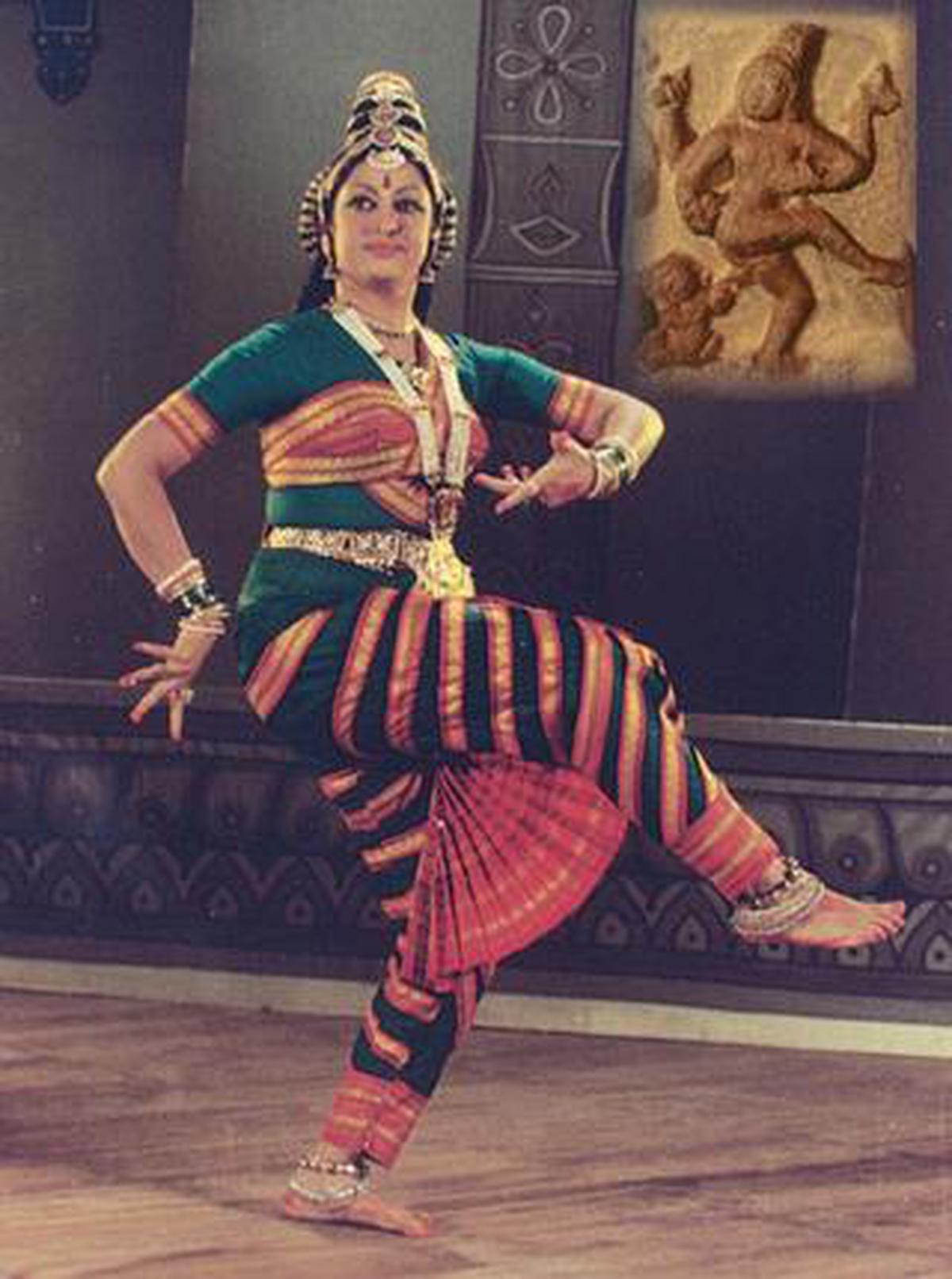
Padma Subrahmanyam’s dance is inspired by temple sculptures and murals
| Photo Credit: Courtesy: Nrithyodaya
The Marga, or movement grammar described in the Natya Shastra, which she resurrected as part of her research, is the link between all the Desi-s (regional forms), she notes, just as Sanskrit is the link between various languages, and here she includes even Tamil, which is commonly accepted as a part of the Dravidian family not related to Sanskrit.
“I am not someone who thinks there is an iron curtain between Sanskrit and Tamil,” she remarks with reference to the high emotions generated by the language debate. Politics apart, what is the connection between these two languages?
“I am not a linguist. I am not a philologist to give you a precise answer for this. From my experience of studying Sanskrit literature and Tamil literature I am able to see a lot of parallels. I cannot believe that Tamil has nothing to do with Sanskrit. Sanskrit was the lingua franca, nobody denies that. Which is older is not my problem. Both are beautiful old languages, which had a lot of give and take. Sanskrit, if I understand properly, is a language named because of the concept of sanskriti, refinement. So it was developed consciously by the intellectual prowess of the rishis, and great poets like Kalidasa, since Vedic Sanskrit is different from Kalidasa’s Sanskrit. In the same way, Tamil has evolved in 2,000 years. If someone speaks in Sangam Tamil, you’re not going to understand that as Tamil at all.”
She adds, “My mother composed a few hundred songs in both Sanskrit and Tamil. So I am able to see an extraordinary link between the two and I do not believe in the (Aryan-Dravidian) race theory.”
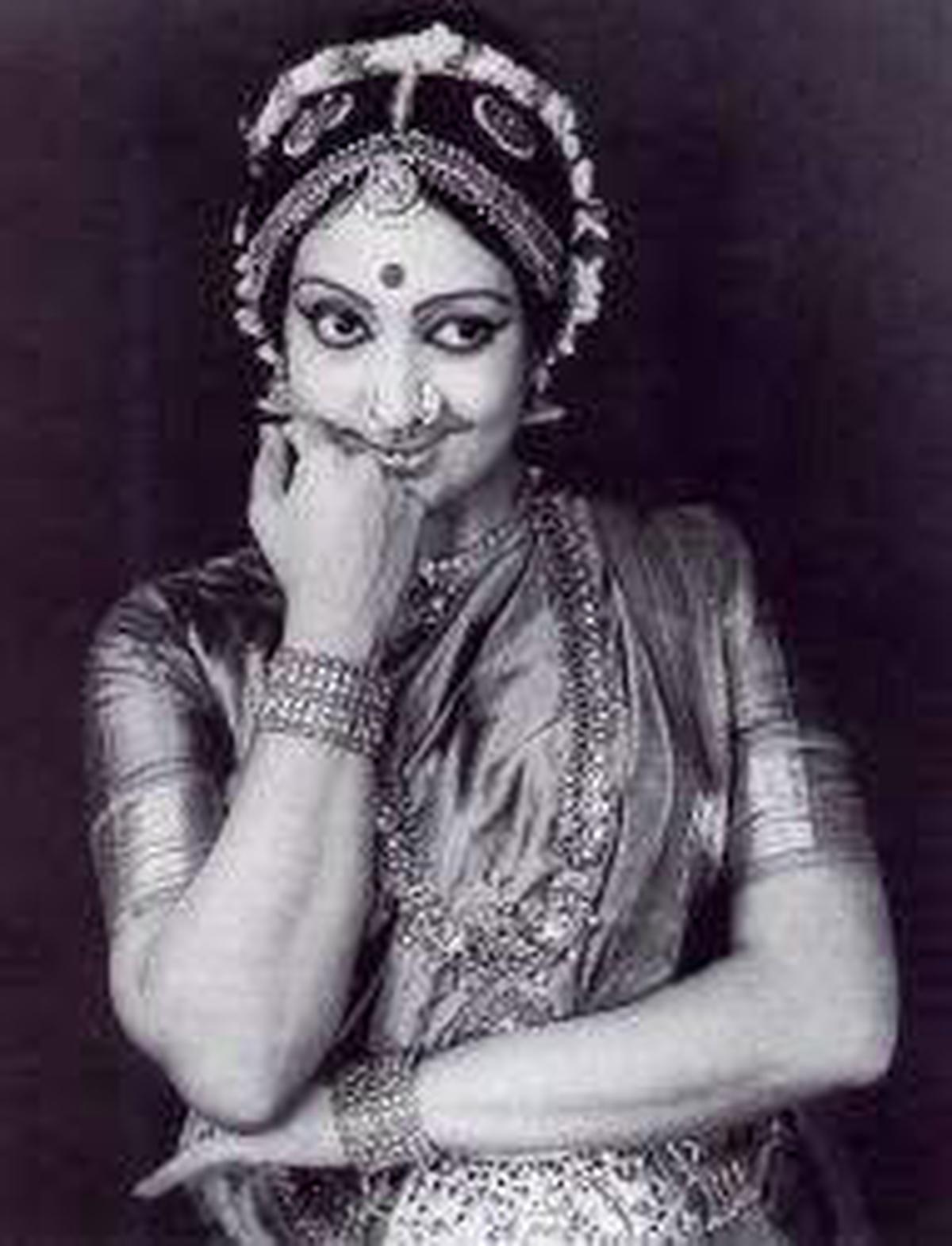
The dancer in her younger days
| Photo Credit: Courtesy: Nrithyodaya
Scholastic angle
Reverting to the Natya Shastra, she says, “Bharata has mentioned so many tribes, so many ethnic groups. There is no mention of Aryan and Dravidian. So as someone who has absolutely no interest in power (that’s not my cup of tea), I understand my country purely from a scholastic angle.”
She looks at “this whole of Bharatavarsha from the sky,” she says. “I look at it as a whole. So I cannot think of separating. There are regional beauties.”
The Desi forms (including Bharatanatyam, Kathak, and other dance styles categorised as classical), she explains, have their own character, influenced by regional tastes and other factors.
Back in the 1970s, one recalls, Padma Subrahmanyam’s was perhaps the only known name in Chennai associated with scholarship along with an active performance career. Apart from giving talks on the 108 karanas that she recreated in dance movement after painstakingly studying the Natya Shastra, related texts and sculptural evidence (also establishing that these sculptures were movements and not static postures), she performed solos and group productions, demonstrating her style, which she came to call Bharata Nrityam.
“A lot of people confuse Bharatanatya and Bharata’s Natya. Bharatanatya is Desi, Bharata’s Natya is Marga,” she says. “Bharata Nrityam is a name I had to give to make people understand it’s a combination of the Marga of Natya Shastra and Sadir of Bharatanatyam.” She counts among her gurus in Bharatanatyam, Vazhuvoor Ramaiah Pillai and Mylapore Gowri Ammal.
She was also the first convenor of the Natya Kala Conference in 1981, the popular annual event of Krishna Gana Sabha that brings together scholars, dancers and audiences from a spectrum of disciplines.
“The whole of my life I have been trying to bridge the gap between history and theory, theory and practice. And I think I have achieved something on those lines,” she muses.
Broader perspective
Many look up to her as a thought leader in the cultural field, and with a lot of chauvinism having pervaded society today, affecting the understanding of what is pan-Indian or pan-Asian, has she ever thought about how her words could be quoted in contexts that reinforce a bigoted perspective of Indian history?
“I have never thought of myself as a leader. Because I am in my own world. There is not enough time for me to think, to do my work. I am a nationalist. I care for my motherland, I care for the welfare of my people.”
One of the ways these priorities are accomplished is through the free dance education imparted by Nrithyodaya since its inception, she adds. “Thinking of whole India is nothing new for me. it was my father’s idea. I take that legacy forward. We had two or three top teachers for Bharatanatyam, Manipuri (Kamini Kumar Sinha was brought from Santiniketan) which was not taught anywhere else, Kathak which was never taught in any South Indian institution, and of course Kathakali (Guru Gopinath). All this was happening under one roof. And I continued that attitude taking the whole region under one umbrella, still giving respect to regional taste. And I was able to identify which aspect of Natya Shastra is there in each region. That’s why I call Natya Shastra the mother of all the presently known forms.”
Nrithyodaya has conducted Natya Shastra Shiksha camps and trained innumerable dancers in the practice and theory of the Natya Shastra. Several dancers trained under Guru Padma will be performing at its 80th anniversary.
Among the productions slated for performance is ‘Valli Kalyanam’, being revived after over three decades. It was originally choreographed for Singapore-based artistes, she states. Its music, like that of most of her other productions, is composed by her, because, as she says, “music and movement come together in my mind.”
Another production being revived is ‘Harihara’, a half-hour piece taken from Chalukyan history, with lyrics by Shatavadhani R. Ganesh. “It was originally choreographed for two dancers, Padmini Ravi and Nandini Alva. But now all my six senior dancers based in Karnataka are coming together — Anuradha Vikranth, Rukmini Vijayakumar, Veena Nair, Dhanya Nair, Samudhyatha Bhat and Samanvitha Bhat.” Another highlight of the three-day event will be ‘Amara — dancing the stories of Banteay Srei of Cambodia’ by Apsaras Arts of Singapore.
The writer specialises in classical dance.

